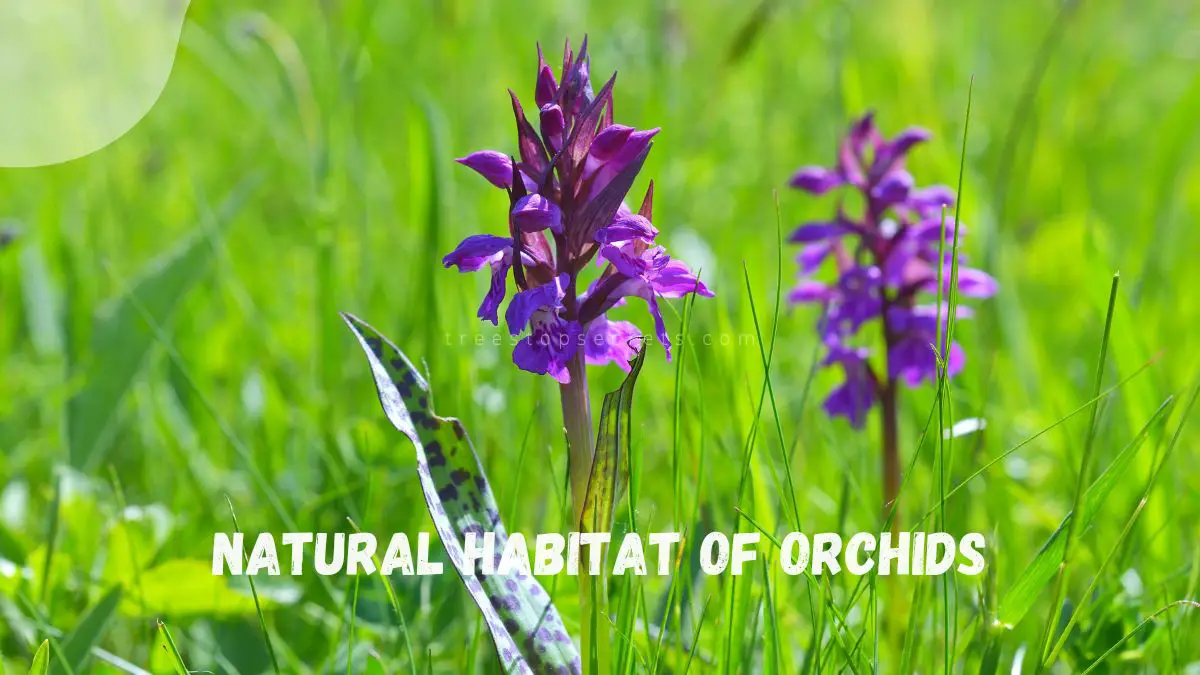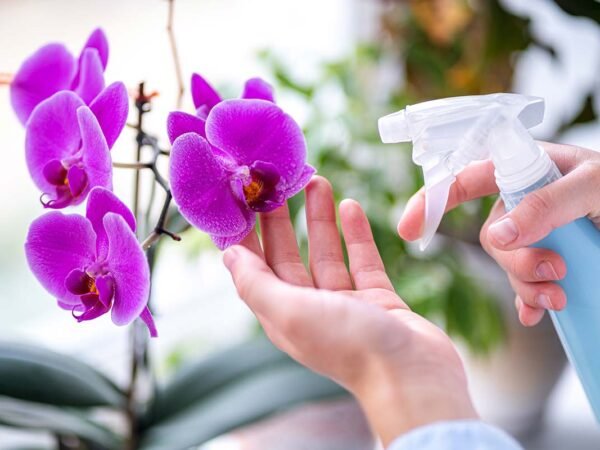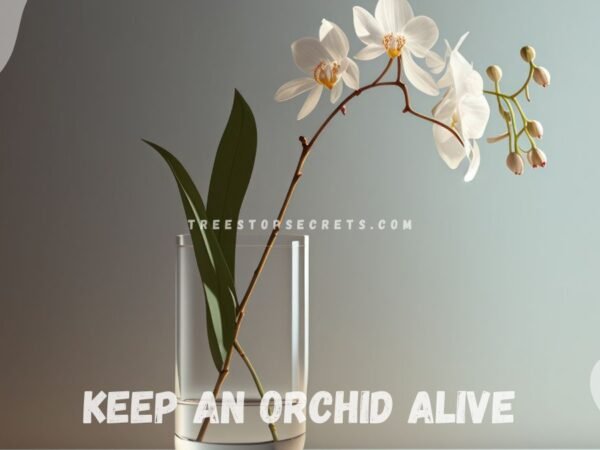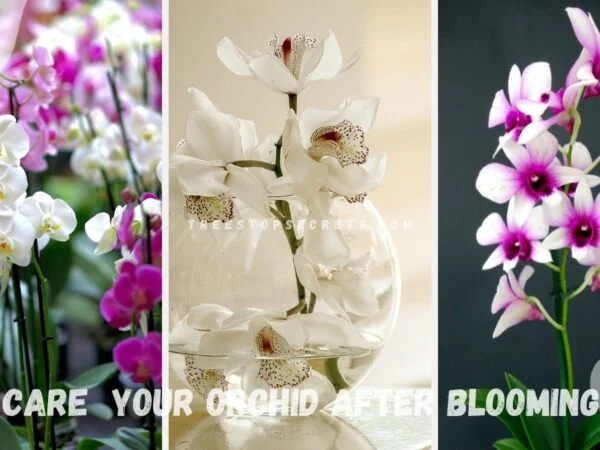Discover the allure of orchids thriving in their natural habitat, a stark contrast to their cultivated counterparts. Unveil the secrets of these exquisite wild orchids as they flourish in their untouched environments, showcasing their true beauty and resilience against the backdrop of nature's grandeur. Delve into the world of orchids in the wild, where they adapt and thrive in diverse ecosystems, painting vibrant hues amidst lush greenery. Explore the enchanting realm where orchids reign supreme, captivating all who encounter their breathtaking splendor.
Key Takeaways
- Understand the diverse habitats where orchids thrive to better care for these delicate plants.
- Orchids flourish in regions with specific climatic conditions that mimic their natural environments.
- Provide adequate light, ensuring a balance between sunlight exposure and shade for healthy orchid growth.
- Maintain optimal humidity levels and water orchids appropriately to mimic their native habitat conditions.
- Pay attention to the soil composition and structure when cultivating orchids to replicate their natural growing conditions.
- Support conservation efforts to preserve orchid habitats and protect these beautiful plants for future generations.
Exploring Orchid Habitats
Global distribution
Orchids can be found in various regions worldwide, from tropical rainforests to arid deserts. They thrive in diverse habitats, including Asia, South America, and Africa. Orchids play a vital role in ecosystems by supporting pollinators and contributing to biodiversity.
- Orchids are abundant in the Amazon Rainforest, where they form a crucial part of the ecosystem.
- In Asia, orchids flourish in countries like Thailand and Indonesia, adding beauty to the landscape.
- The presence of orchids indicates the health of an ecosystem, making them essential for environmental balance.
Climate variety
Orchids have adapted to survive in a wide range of climates, from humid jungles to chilly mountain slopes. Climate diversity impacts orchid species' growth patterns and flowering seasons. Orchids demonstrate remarkable resilience by thriving in both hot and cold environments.
- Orchids in tropical regions have evolved to withstand high temperatures and humidity levels.
- Species in colder climates have developed mechanisms to survive frost and snow during winter.
- The ability of orchids to thrive in diverse climates showcases their versatility as plants.
Unique ecosystems
Orchids grow in unique ecosystems such as cloud forests, mangrove swamps, and even on rocks and trees. They form symbiotic relationships with fungi, insects, and animals for pollination and nutrient exchange. Preserving these ecosystems is crucial for orchid conservation efforts worldwide.
- Epiphytic orchids rely on trees for support while obtaining nutrients from the air and rain.
- Terrestrial orchids grow in soil and form partnerships with fungi for nutrient absorption.
- The destruction of these ecosystems threatens not only orchids but also the biodiversity they support.
Regions Where Orchids Flourish
Tropical Rainforests
Tropical rainforests provide the perfect conditions for orchids to thrive due to their high humidity and consistent temperatures. The warmth and moisture in these environments support the growth of various orchid species. Orchids in tropical rainforests benefit from the diverse ecosystem, allowing them to adapt and evolve uniquely.
The humid climate in tropical rainforests plays a crucial role in ensuring orchids' vitality by providing constant moisture. Orchids require high humidity levels to flourish, making these regions ideal habitats. The moderate temperatures found in tropical rainforests create a stable environment for orchids to grow steadily.
- Orchids thrive in the lush environment of tropical rainforests.
- High humidity and consistent temperatures support orchid growth.
- Diverse ecosystems in rainforests allow orchids to adapt uniquely.
Mountain Ranges
Orchids exhibit remarkable adaptability to high-altitude mountain environments, showcasing their resilience in challenging conditions. The unique features of orchids enable them to survive and bloom in mountainous regions worldwide. Despite facing obstacles such as harsh weather, orchids continue to display their beauty in mountain ranges.
In high-altitude mountain areas, orchids have developed specialized adaptations to cope with the extreme conditions, including limited nutrients and harsh climates. Orchids face challenges such as fluctuating temperatures and reduced oxygen levels at higher altitudes. However, their ability to thrive in such environments showcases their remarkable endurance.
- Orchids demonstrate resilience and beauty in mountainous regions.
- Specialized adaptations help orchids survive harsh mountain climates.
- Challenges like fluctuating temperatures test orchids' endurance.
Temperate Zones
Orchids have adapted to survive in temperate climate zones by adjusting to seasonal changes that impact their growth patterns. The diversity of orchid species found in temperate regions reflects their ability to thrive in varying conditions throughout the year. Orchids in temperate zones undergo dormancy during colder months before blooming again when conditions are favorable.
Seasonal changes play a significant role in influencing the growth and blooming cycles of orchids in temperate regions. As temperatures fluctuate, orchids adjust their growth patterns accordingly to ensure survival. The variety of orchid species present in temperate zones highlights their versatility and ability to adapt to different environmental conditions.
- Orchids adjust to seasonal changes in temperate climate zones.
- Seasonal fluctuations influence orchid growth and blooming cycles.
- Versatility is showcased through diverse orchid species in temperate regions.
Arid Environments
Orchids exhibit unique adaptations to survive in arid environments where water scarcity poses a challenge to their growth. The resilience of orchids is evident as they have evolved mechanisms to conserve water and withstand dry conditions. Despite the aridity of these regions, certain orchid species have thrived through their ability to endure harsh environments.
In arid environments, water scarcity presents a significant obstacle for orchids, requiring them to develop strategies for efficient water usage. Orchids have adapted by storing water within their structures and reducing water loss through specialized mechanisms. Their ability to thrive despite limited water sources demonstrates their remarkable resilience.
- Unique adaptations enable orchids to survive in arid environments.
- Orchids have evolved mechanisms to conserve water in dry conditions.
- Resilience is shown through thriving orchid species in arid regions.
Conditions for Growth
Light Needs
Orchids require ample light for their growth and blooming, with insufficient light leading to weak plants. These plants utilize light for photosynthesis, a process crucial for their survival. Different orchid species have varying light requirements, from low light for Phalaenopsis to bright light for Cattleyas.
Humidity Levels
Maintaining optimal humidity levels is essential for orchid health. High humidity promotes blooming and prevents wilting, while low humidity can lead to dry, unhealthy plants. Proper humidity levels are vital for orchid care, ensuring the plants thrive and produce vibrant blooms.
Soil and Substrates
The choice of soil and substrates significantly impacts orchid cultivation. Orchids prefer well-draining mediums that prevent waterlogging and root rot. Various growing mediums such as bark, sphagnum moss, or perlite offer different benefits to orchids. Well-draining substrates are crucial for orchid roots to breathe and absorb nutrients effectively.
Types of Orchid Habitats
Epiphytic Orchids
Epiphytic orchids are air plants that grow on trees and branches, absorbing moisture and nutrients from the air. These orchids have specialized roots that cling to surfaces without needing soil. Their unique growing habits allow them to thrive in diverse environments.
These orchids obtain nutrients and water through their aerial roots, which absorb moisture from the air and rain. They also benefit from debris that accumulates around them, providing additional nourishment. Epiphytic orchids showcase a stunning display when they bloom, adding a touch of elegance to their host trees and surroundings.
Terrestrial Orchids
Terrestrial orchids are ground-dwelling plants that prefer soil-based habitats for growth. These orchids thrive in rich, well-draining soils with the right balance of nutrients. They require specific conditions such as proper sunlight exposure and moisture levels to flourish.
Terrestrial orchids vary greatly in species and can be found across the globe in various ecosystems. From tropical rainforests to temperate grasslands, these orchids adapt to different climates and terrains. Their diversity in colors, shapes, and sizes make them a fascinating subject for botanists and enthusiasts alike.
Lithophytic Orchids
Lithophytic orchids are rock-dwelling plants that have evolved to survive in rocky environments where soil is scarce. These orchids anchor themselves onto rocks and stones using specialized structures, such as adhesive pads or velamen roots. Their ability to thrive in challenging conditions sets them apart from other orchid species.
In rocky habitats, lithophytic orchids utilize crevices and rough surfaces to secure themselves firmly. They withstand harsh weather conditions and limited water sources by storing moisture efficiently. The beauty of lithophytic orchids blooming amidst rugged landscapes highlights their resilience and adaptability.
Importance of Light
Direct vs. indirect light
When orchids are exposed to direct light, they can experience burning on their leaves due to excessive heat. On the other hand, indirect light provides a more gentle and diffused illumination, preventing leaf damage. Orchids exhibit different responses to these light types, with direct light stimulating faster growth but also increasing the risk of sunburn. In contrast, indirect light promotes steady growth without the risk of damage, making it ideal for many orchid species. Achieving a balance between direct and indirect light exposure is crucial for maintaining optimal orchid health.
- Pros:
- Direct light stimulates rapid growth.
- Indirect light prevents leaf burning.
- Cons:
- Direct light can cause sunburn.
- Indirect light may slow growth compared to direct light.
Light intensity
The intensity of light plays a vital role in the growth and development of orchids. Insufficient light intensity can lead to poor growth and limited flowering, while excessive intensity can result in scorched leaves and stunted growth. Low light intensity may cause orchids to become leggy and fail to bloom properly. Conversely, high light intensity can stress the plants, hindering their overall health and blooming potential. Finding the right balance of light intensity is essential for promoting robust flowering and ensuring the well-being of orchids.
- Effects of low light intensity:
- Leggy growth
- Poor flowering
- Effects of high light intensity:
- Scorched leaves
- Stunted growth
Humidity and Water Requirements
Moisture levels
Maintaining proper moisture levels is crucial for orchids as they are highly sensitive to changes. Inconsistent moisture can lead to root rot, stunted growth, and even death. Overwatering orchids can suffocate their roots, causing them to decay and ultimately killing the plant. On the other hand, underwatering can lead to dehydration and wilting of the orchid.
Moisture plays a vital role in the health and growth of orchid roots. It helps in nutrient absorption and supports overall plant vigor. Orchids require a balance of moisture to thrive, with well-draining soil essential to prevent waterlogging that can harm the roots.
Watering patterns
The ideal watering frequency varies among different orchid species, but a general rule is to water when the top layer of the potting mix feels dry to touch. Consistent watering patterns are essential for orchid blooming, as fluctuations in moisture levels can disrupt their flowering cycle.
Signs of underwatering include shriveled pseudobulbs, dry and wrinkled leaves, and slow growth. Conversely, symptoms of overwatering manifest as yellowing leaves, mushy stems, and a foul odor indicating root rot.
- Pros:
- Proper moisture levels promote healthy root development.
- Consistent watering patterns support regular blooming cycles.
- Cons:
- Overwatering can lead to root rot and plant death.
- Underwatering causes dehydration and stunted growth.
Soil Composition and Structure
When it comes to orchid cultivation, using organic materials offers numerous benefits. These materials enhance the nutritional content of the soil, aiding in the healthy growth of orchids. Examples of organic materials include sphagnum moss, bark chips, and coconut husk.
Good drainage is essential for orchids as it prevents waterlogged conditions that can lead to root rot. Proper drainage properties in potting mixes ensure that excess water can easily drain out, keeping roots healthy. Orchids thrive when their roots have access to oxygen-rich environments.
Organic materials such as sphagnum moss and bark chips contribute essential nutrients to orchids, promoting robust growth. These materials also aid in retaining moisture, ensuring a consistent supply of water for the plants. Coconut husk is another excellent organic option for orchid potting mixes.
Adequate drainage in orchid pots is crucial to prevent water from pooling around the roots, which can cause them to rot. Well-draining potting mixes allow excess water to flow out efficiently, maintaining optimal moisture levels for healthy orchid growth. Proper drainage also helps prevent fungal infections in orchids.
Preserving Orchid Habitats
Threats to habitats
Human activities such as deforestation and illegal logging pose significant threats to orchid habitats. Climate change also disrupts the delicate ecosystems where orchids thrive. Conservation efforts are crucial to protect endangered orchid plants.
- Human activities: Deforestation for agriculture and urbanization destroys orchid habitats.
- Climate change: Alters temperature and rainfall patterns, affecting orchid growth and survival.
- Deforestation: Leads to loss of biodiversity, impacting orchids and their natural habitats.
Conservation efforts
Botanical gardens, research institutions, and conservation organizations are actively involved in conserving orchid habitats. These initiatives aim to preserve the biodiversity of endangered orchid plants. Community participation is essential for successful conservation projects.
- Botanical gardens: Conduct research, cultivate endangered orchids, and raise awareness.
- Research institutions: Study orchid species, their habitats, and develop conservation strategies.
- Conservation organizations: Implement protection measures, advocate for habitat preservation.
Role of communities
Local communities play a vital role in safeguarding orchid habitats through community-led conservation initiatives. Their involvement enhances awareness about the importance of preserving orchids and their natural environments. Community engagement is key to the success of orchid conservation efforts.
- Community involvement: Helps monitor orchid populations, report illegal activities, and promote conservation.
- Initiatives: Include planting native species, restoring degraded habitats, and organizing educational programs.
- Positive impact: Community awareness leads to sustainable practices that benefit orchids and ecosystems.
Summary
Understanding the natural habitat of orchids is essential for their successful growth. From exploring different regions where orchids flourish to the specific conditions required for their development, each aspect plays a crucial role in nurturing these delicate plants. The importance of light, humidity levels, water requirements, and soil composition cannot be overstated when creating an environment that mimics their natural habitats. Preserving orchid habitats is not only beneficial for the plants themselves but also contributes to the overall biodiversity of our ecosystem.
Now that you have a deeper insight into the natural habitat of orchids and the factors influencing their growth, consider applying this knowledge to enhance your own orchid cultivation practices. By replicating these conditions as closely as possible, you can create a thriving environment for your orchids to flourish and bloom beautifully.
Frequently Asked Questions
What are the main factors influencing orchid growth in their natural habitats?
Orchids thrive based on specific conditions like light, humidity, water, soil composition, and structure. These factors collectively contribute to the successful growth and development of orchids in their natural habitats.
How does light affect the growth of orchids in their natural habitats?
Light plays a crucial role in orchid growth as it influences photosynthesis, flowering, and overall plant health. Orchids require varying levels of light intensity depending on their species, making it essential to understand each orchid's specific light requirements.
Why is humidity important for orchids in their natural habitats?
Maintaining optimal humidity levels is vital for orchids as it affects transpiration, nutrient uptake, and overall plant hydration. Orchids typically thrive in environments with high humidity levels to support their growth and prevent issues like dehydration or wilting.
What type of soil composition is suitable for orchids in their natural habitats?
Orchids prefer well-draining soil that allows air circulation around their roots. A mix of materials like bark, perlite, sphagnum moss, or charcoal provides the right balance of aeration and moisture retention for healthy orchid growth in their natural habitats.
How can we contribute to preserving orchid habitats?
Preserving orchid habitats involves supporting conservation efforts, avoiding illegal trade practices, and promoting sustainable cultivation methods. By raising awareness about the importance of protecting orchid habitats, individuals can help safeguard these delicate ecosystems for future generations.
Image Source: Paid image from CANVA





